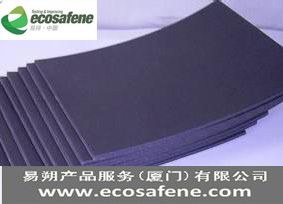Description
EN ISO *****2:Oxygen Index Test to Plastics Material
Ecosafene Products Service Co.,Ltd have rich experience to provide
ISO *****2: Oxygen Index Test to Plastics Material.
EN ISO *****2: Plastics – Determination of burning behaviour by
oxygen index – Part 2: Ambient- temperature test.
EN ISO *****2:Oxygen Index Test to Plastics Material -
Principle
A small test specimen is supported vertically in a mixture of
oxygen and nitrogen flowing upwards through a transparent chimney.
The upper end of the specimen is ignited and the subsequent burning
behaviour of the specimen is observed to compare the period for
which burning continues, or the length of specimen burnt, with
specified limits for such burning. By testing a series of specimens
in different oxygen concentrations, the minimum oxygen
concentration is estimated. Alternatively, for comparison with a
specified minimum oxygen index value, three test specimens are
tested using the relevant oxygen concentration, at least two of
which are required to extinguish before any relevant burning
criterion is exceeded.
EN ISO *****2:Oxygen Index Test to Plastics Material - Scope
This part of ISO ***9 specifies methods for determining the minimum
concentration of oxygen,
in admixture with nitrogen, that will support combustion of small
vertical test specimens under
specified test conditions. The results are defined as oxygen index
values.
Methods are provided for testing materials that are self-supporting
in the form of vertical bars or sheet up to *0,5 mm thick. These
methods are suitable for solid, laminated or celluar materials
characterized by an apparent density greater than **0 kg/m3.
The methods may also be applicable to some cellular materials
having an apparent density of less than **0 kg/m3. A method is
provided for testing flexible sheet or film materials while
supported vertically. For comparative purposes, a procedure is
provided for determining whether or not the oxygen index of a
material lies above some specified minimum value.
Oxygen index results obtained using the methods described in this
part of ISO ***9 can provide a sensitive measure of the burning
characteristics of materials under certain controlled laboratory
conditions, and hence may be useful for quality control purposes.
The results obtained are dependent upon the shape, orientation and
isolation of the test specimen and the conditions of ignition. For
particular materials or applications, it may be necessary or
appropriate to specify different test conditions. Results obtained
from test specimens of
differing thickness or by using different ignition procedures may
not be comparable and no
correlation with flammability behaviour under other fire conditions
is implied.
Results obtained in accordance with this part of ISO *****2 must
not be used to describe or appraise the fire hazard presented by a
particular material or shape under actual fire conditions, unless
used as one element of a fire risk assessment that takes into
account all of the factors pertinent to the assessment of the fire
hazard of a particular application for the material.
EN ISO *****2:Oxygen Index Test to Plastics Material - relative
standards
IEC **********0 Fire hazard testing - Part ****0: Test flames **0 W
horizontal and vertical flame test methods
UL *4 Test For Flammability of Plastic Materials for Parts in
Devices and Appliances
UL***1:***9 Reference standard fo electrical wires cables,and
flexible cords VW*1(clause ***0)
IEC **************0 (GB ***9.*1) Fire hazard testing — Part ***1:
Glowing/hot-wire based test methods — Glow-wire flammability test
method for end-products
IEC **************0 (GB ***9.*2) Fire hazard testing — Part ***2:
Glowing/hot-wire based test methods — Glow-wire flammability test
method for materials
IEC **************0 (GB ***9.*3) Fire hazard testing — Part ***3:
Glowing/hot-wire based test methods — Glow-wire ignitability test
method for meterials
ASTM D ***3Standard Test Method for Measuring the Minimum Oxygen
Concentration to Support Candle-Like Combustion of Plastics (Oxygen
Index)
